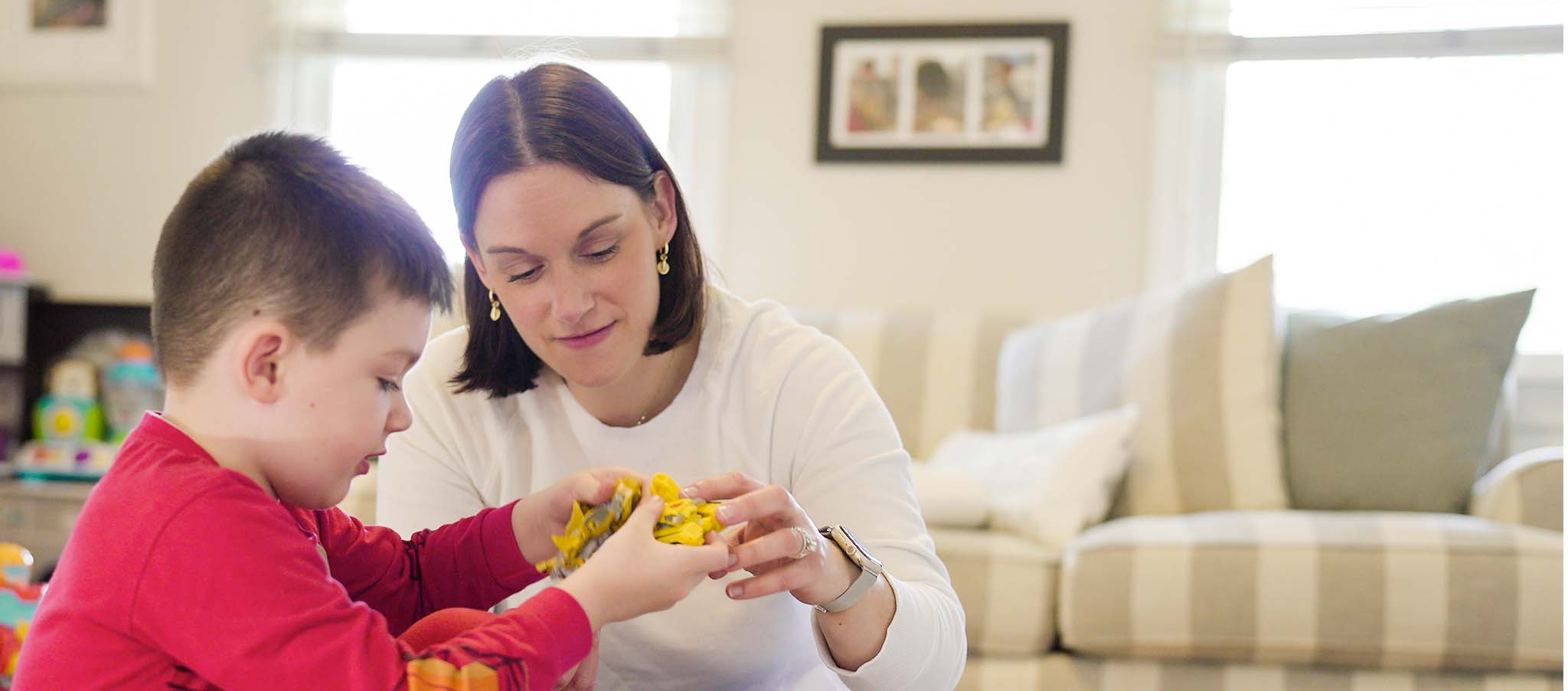Something felt off when Caitlin brought her newborn son home in 2017. Instead of enjoying the exhausting yet magical time to care for and bond with her baby, she struggled with terrifying feelings and couldn't connect with the tiny person she had been so excited to meet.
“I really felt like I had someone else's child in my house, and I was having to take care of this baby.”
The first-time mom was suffering from postpartum depression (PPD), which is more severe and long-lasting than the typical “baby blues.”1 PPD affects about 1 in 8 women who have a live birth, according to the U.S. Centers for Disease Control and Prevention.2
Caitlin is sharing her deeply personal story about PPD to bring attention to the condition that robbed her of precious moments with her firstborn and to offer hope. “I want other women to know that you don't have to go through it by yourself,” she said. “There are things that you can do.”
Difficult initiation into motherhood
Caitlin's postpartum journey did not begin smoothly. Her labor lasted for more than 60 hours and ended in an emergency Caesarean section. The next day, as she was breastfeeding her son, he had a seizure and stopped breathing. Both were rushed to another hospital, and test results revealed her son had a stroke. She stayed for two days, and the baby came home six days later on seizure medication. She soon discovered he had a breast milk allergy and needed to switch to formula. (Thankfully, he is thriving today.)
It's hard for Caitlin to find the words for her emotional state in those blurry early days. “Overwhelming doesn't even begin to describe the feeling and the disconnection,” she said. “It's feeling like you were almost floating above your own body, just kind of watching everything happen and really not knowing what's happening, and just going from moment to moment.”
She had uncharacteristic outbursts of emotion, felt completely alone and was extremely anxious. “I remember a moment where I was sitting on my bed with my son next to me watching my husband drive away to go to work and just panicking that something was going to happen to my husband...I had this completely irrational sense of, ‘I don't know what I'm going to do; I don't know where I'm going to go,’” Caitlin said.
